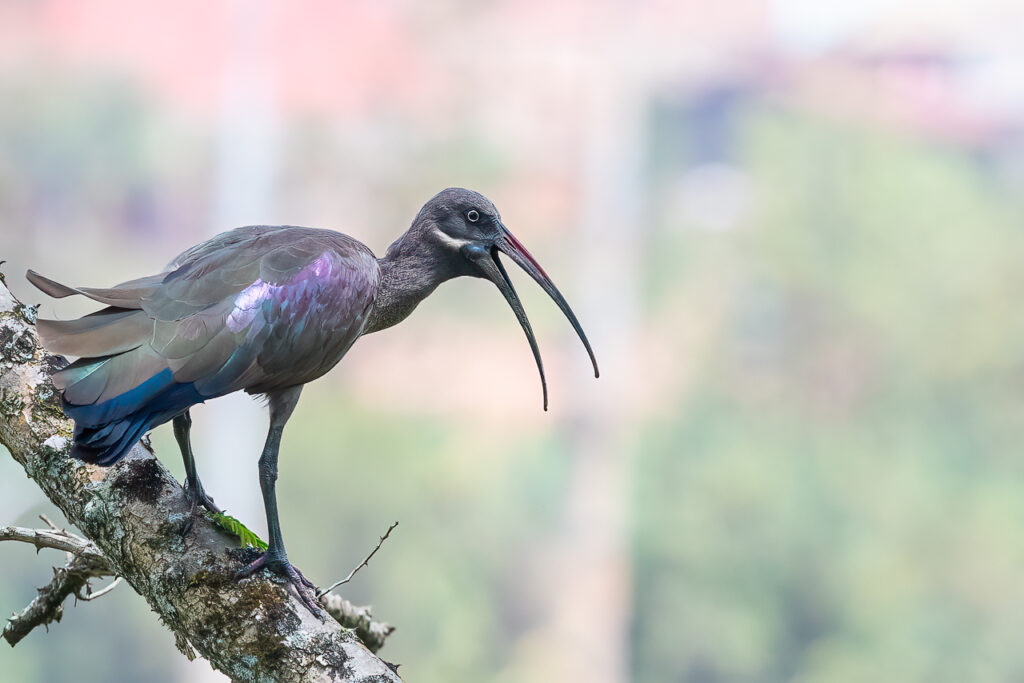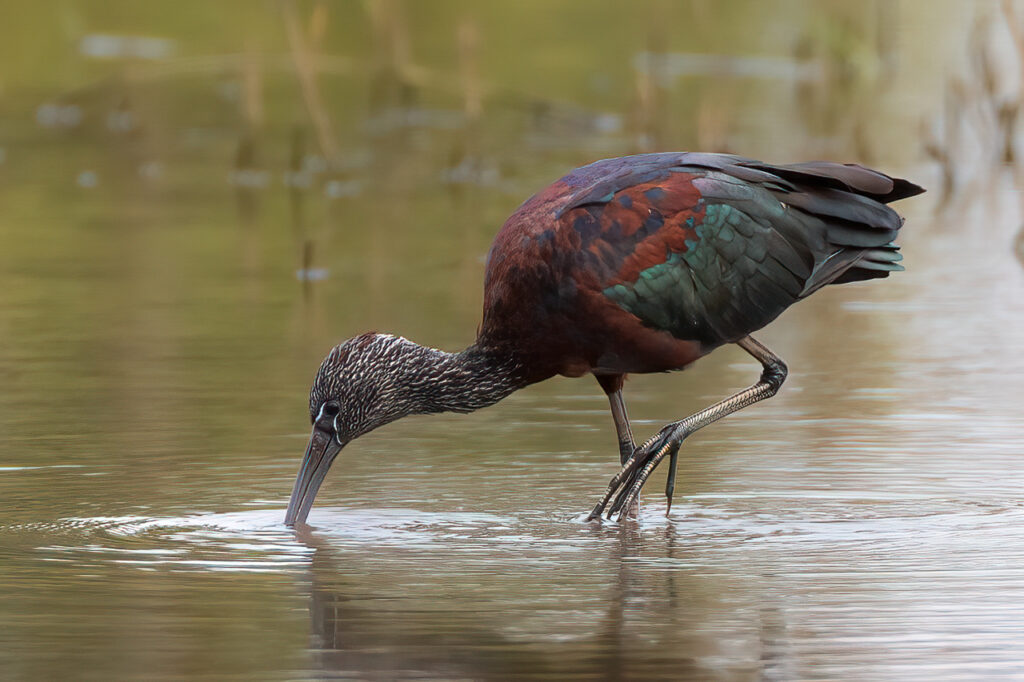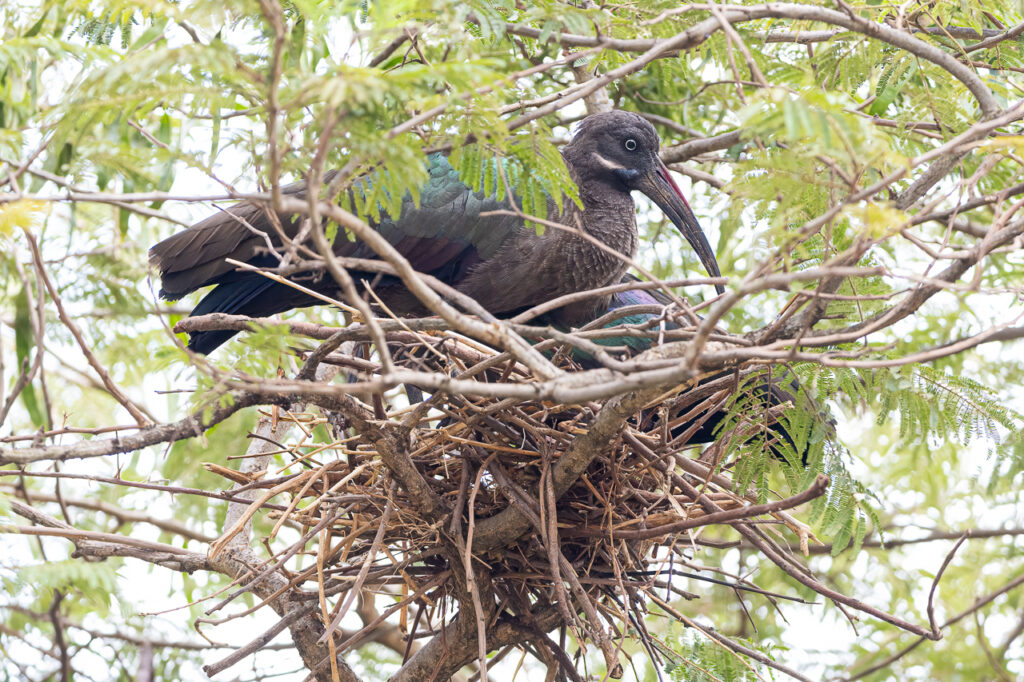Three different species of ibis call Rwanda home. Two of these, the Hadada and African Sacred Ibis are resident species and can be found year-round across the country. The Glossy Ibis on the other hand is an intra-African migrant and is most abundant in Rwanda between October and January, although numbers will vary depending on the amount of rainfall.

Although all three species frequent aquatic habitats and will often associate with other water birds whilst looking for food, the Hadada has also become well adapted to urban environments, suburban gardens, and also cultivated land. Their gregarious and noisy vocalisations which are given whilst stationary and in flight are definitely loud and unique, to say the least… (have a listen – https://xeno-canto.org/species/Bostrychia-hagedash). Whenever I hear the screeching contact calls of a flock of Hadada Ibis flying over, I always remember with a smile what a good friend told me, he said that the Zulus think that the reason hadadas make such a sound while flying is because they are actually scared of flying!
The African Sacred Ibis gets its common name because of its link to a Ancient Egypt, and their god, Thoth. Thoth was their god of writing, wisdom and magic – he was depicted with the head of a bird with a long downward curving beak, which was probably a representation of this ibis species. Sadly, the African Sacred Ibis is no longer found as far north as Egypt, but like the Hadada, it is common in many countries south of Sahara. The Glossy Ibis is the most widespread of all the world’s 36 ibis species, with populations in the Americas, Europe, Asia, Africa, and Australia.

Ibises are characterised by long decurved bills which are used to probe soil and mud for food. The adult males and females look physically very similar, meaning there is no colour dimorphism across the three species. The African Sacred Ibis is the largest of the three species. The Hadada and Glossy have feathered heads, whereas the heads of the African Sacred is bare. All three have some form of iridescent plumage and fairly long necks which remain extended in flight. They have broad, rounded wings which are used for soaring – the African Sacred Ibis can often be seen flying in large flocks in V-formation, particularly in the evenings over Kigali.

The three species forage for the majority of their prey items by probing soft ground and shallow water with their long, curved beaks. Their diet largely consists of aquatic invertebrates, crickets, dragonflies, insects, frogs, and snails. Their bills are packed with receptors and sensors which are very sensitive at all depths to the smells and movements of their invertebrate prey.

The ibises will often roost communally in the canopy of trees. While Hadada ibis will often form long-term and socially monogamous pair-bonds, the pair bond of both the Glossy and African Sacred Ibis often only last as long as the breeding season. The Hadadas are solitary nesters, whilst both Glossy and African Sacred nest colonially, often in mixed colonies with herons and storks. Ibis nests are flimsy platforms of sticks and twigs which are often lined with grass. They are often ‘constructed’ in the canopy of trees, although the African Sacred Ibis will also build theirs in bushes and even on bare ground. 2-3 eggs are laid, incubation lasts around 28 days, and after fledging the juvenile hadada ibises remain dependant on their parents for about three months. As befits their live anywhere and forage on anything lifestyle, a pair of Hadada Ibis may raise up to four broods each year, starting afresh as soon as the young are independent!



I’m used to the black and white Ibis we can see in Australia.It’s the first time i see Hadada and Glossy Ibis. Wow, splendid plumage colours! Very interesting comments too, Will!
Thank you Nikky, appreciate the feedback! 🙂
Very interesting, the African sacred ibis is truly stunning, great pictures and information Will xx
Thank you Tracey, glad you found it interesting. 🙂